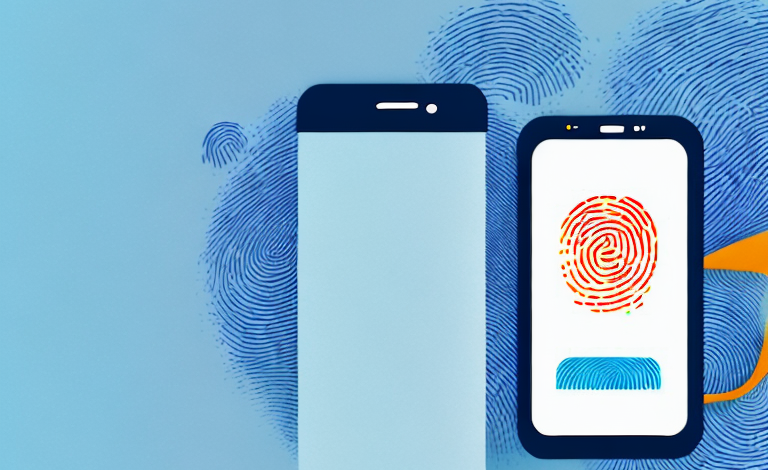Fingerprint lock apps have become more and more common in mobile devices, promising to make unlocking our devices easier and more secure than traditional password protection. But do these apps really work as advertised? In this article, we will explore the functionality, benefits, drawbacks, and potential risks of fingerprint lock apps to answer this question.
How do fingerprint lock apps work?
Fingerprint lock apps use the biometric technology available in mobile devices to scan the user’s fingerprint and identify them as the rightful owner of the device. When setting up a fingerprint lock app, the user is prompted to scan their fingerprint multiple times, with the app recording the unique characteristics of the fingerprint to make sure it is matching up the right owner each time the device is unlocked.
One of the advantages of using fingerprint lock apps is that they provide a higher level of security compared to traditional password or PIN-based locks. This is because fingerprints are unique to each individual and cannot be easily replicated. Additionally, fingerprint lock apps can also be used to secure specific apps or files on the device, providing an extra layer of protection for sensitive information.
Benefits of using fingerprint lock apps
One of the main benefits of using a fingerprint lock app is convenience. With password protection, users have to remember and enter a code every time they want to access their device. Fingerprint lock apps, on the other hand, enable users to easily unlock their device with a simple scan of their fingerprint.
In addition to convenience, fingerprint lock apps are also considered to be more secure than traditional password protection. Fingerprints are unique and cannot be guessed or replicated easily. This makes it much harder for unauthorized individuals to access the device, even if they acquire the password.
Another benefit of using fingerprint lock apps is that they can be used for multiple purposes. For example, some apps allow users to use their fingerprint to make purchases or access certain apps. This eliminates the need for users to remember multiple passwords or codes for different accounts or apps.
Furthermore, fingerprint lock apps can also provide additional features such as tracking who has accessed the device and at what time. This can be useful for monitoring device usage and identifying any unauthorized access attempts.
Are fingerprint lock apps secure?
Fingerprint lock apps are generally considered to be secure, but like any technology, they are not 100% foolproof. There have been instances where hackers have been able to bypass fingerprint scanners using various methods. However, it’s worth noting that these instances are rare and require a high level of technical expertise. In most cases, fingerprint lock apps provide a solid level of security for mobile devices.
It’s also important to note that while fingerprint lock apps may be more secure than traditional password protection, they should not be relied on as the only means of securing your device. Users should also be cautious about installing apps from unknown sources, enable two-factor authentication where possible, and always keep their device updated with the latest security patches.
Another factor to consider when using fingerprint lock apps is the potential for false positives or false negatives. False positives occur when the scanner incorrectly identifies someone as the authorized user, while false negatives occur when the scanner fails to recognize the authorized user. This can be frustrating for users and may lead to them disabling the feature altogether, which can compromise the security of their device.
Additionally, it’s important to keep in mind that fingerprints can be copied or stolen. If someone gains access to your fingerprint, they can potentially use it to unlock your device. Therefore, it’s important to be cautious about where you use your fingerprint to unlock your device and to regularly change your password as an added layer of security.
Top fingerprint lock apps for Android and iOS
Some of the top fingerprint lock apps for Android and iOS devices include AppLock, Norton App Lock, and CM Locker. These apps allow users to not only lock individual apps, but also their entire device using their fingerprint. They also come with additional features such as the ability to take pictures of intruders, send alerts, and much more.
It is important to note that while fingerprint lock apps provide an added layer of security, they are not foolproof. Hackers have been known to bypass fingerprint scanners using various methods. Therefore, it is recommended to use a combination of different security measures, such as strong passwords and two-factor authentication, in addition to fingerprint locks.
How to set up a fingerprint lock app on your device
The process of setting up a fingerprint lock app varies depending on the app and the device being used. However, in most cases, users will need to go to the Settings app on their device and search for the option to “Add Fingerprint” or “Fingerprint Scanner.” Once the scanner is set up, users will be prompted to set their fingerprint as the lock method in the fingerprint lock app of their choice.
It is important to note that not all devices have the capability to support fingerprint lock apps. Users should check their device’s specifications to ensure that it is compatible with the app they wish to use. Additionally, users should always make sure to keep their device and app updated to ensure maximum security and functionality.
Fingerprint lock app vs traditional password protection: Which is better?
While both fingerprint lock apps and traditional password protection have their benefits, fingerprint lock apps are generally considered to be more secure and convenient for users. Passwords can be easily forgotten or guessed, while fingerprints are unique and cannot be replicated easily. However, users should always make sure that their fingerprint lock app is regularly updated and take additional security measures to protect their device.
Another advantage of fingerprint lock apps is that they can provide faster access to your device or specific apps. With a traditional password, you need to type in the characters every time you want to unlock your device or access a specific app. With a fingerprint lock app, you can simply place your finger on the sensor and gain access within seconds. This can save time and make the user experience more seamless.
Potential drawbacks of using a fingerprint lock app
One potential drawback of using a fingerprint lock app is that users may become too reliant on this method of security and neglect other important security measures. It’s important to remember that fingerprint lock apps are just one layer of security and should not be relied on as the sole means of protecting your device.
Another potential drawback is that not all devices are equipped with fingerprint scanners, meaning that some users may not have access to this feature. Additionally, some users may have conditions that affect their fingerprints or make it difficult for the scanner to recognize their print.
Another potential drawback of using a fingerprint lock app is that it may not be as secure as other methods of authentication. While fingerprint scanners are generally considered to be secure, they can be fooled by high-quality fake fingerprints or even photos of fingerprints. This means that determined hackers or criminals may be able to bypass the fingerprint lock and gain access to your device.
Finally, using a fingerprint lock app may also raise privacy concerns. Some users may be uncomfortable with the idea of storing their biometric data on their device or in the cloud, where it could potentially be accessed by unauthorized parties. It’s important to carefully consider the privacy implications of using a fingerprint lock app and to make an informed decision based on your own comfort level and risk tolerance.
How to troubleshoot common issues with fingerprint lock apps
Common issues with fingerprint lock apps include the scanner not recognizing the user’s fingerprint or the app failing to lock certain apps properly. In such cases, users can try restarting their device, updating their fingerprint scanner software, or uninstalling and reinstalling the app. If the issue persists, users can reach out to the app’s customer support team for further assistance.
Another common issue with fingerprint lock apps is the scanner not working properly due to dirt or moisture on the user’s fingers. In such cases, users can clean their fingers and the scanner with a dry cloth and try again. It is also important to ensure that the fingerprint scanner is not damaged or scratched, as this can affect its performance. If the issue still persists, users can consider using an alternative locking method or seeking professional help to repair or replace the scanner.
Future developments in fingerprint technology and its impact on mobile security
As technology continues to advance, it is likely that fingerprint scanners will become even more advanced and secure. There are already talks of integrating other biometric technology such as facial recognition and voice recognition to enhance the security of mobile devices.
Overall, fingerprint lock apps are an effective security measure for mobile devices. While they are not completely foolproof, they provide a convenient and secure way for users to unlock their devices and protect their personal information. By taking additional security measures and staying up-to-date with the latest developments in mobile security, users can ensure that their devices remain protected and secure.
One potential future development in fingerprint technology is the use of ultrasonic waves to create a 3D image of the user’s fingerprint, making it even more difficult for hackers to replicate. Additionally, there is research being done on using sweat pores and vein patterns as unique identifiers for biometric authentication. These advancements could greatly enhance the security of mobile devices and make them even more difficult to breach.



